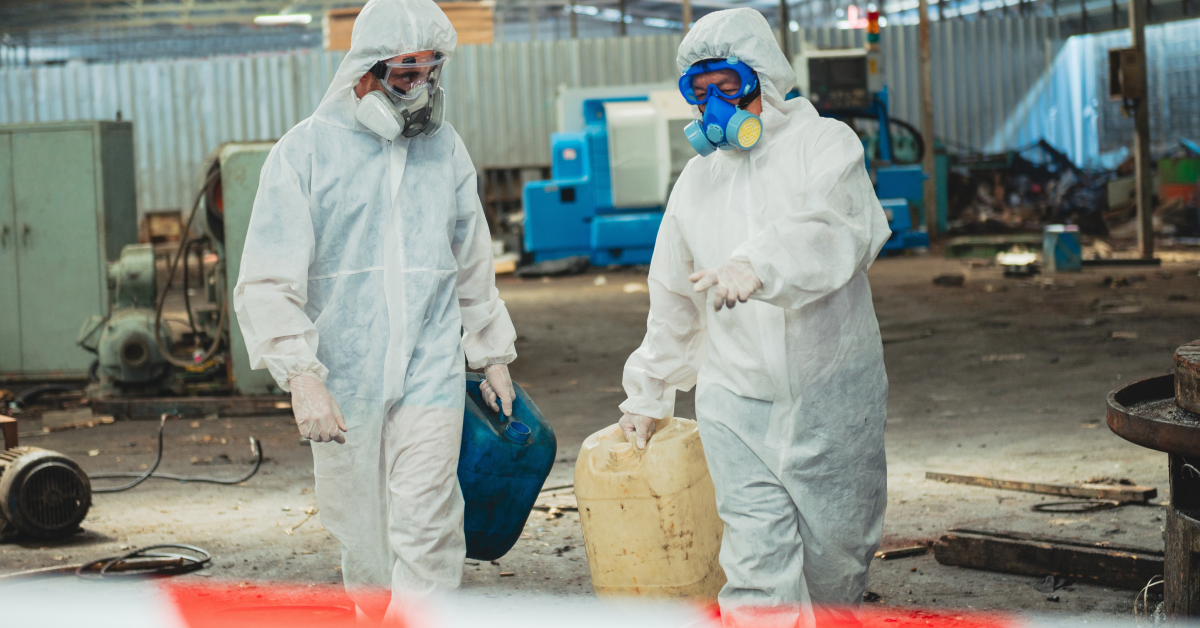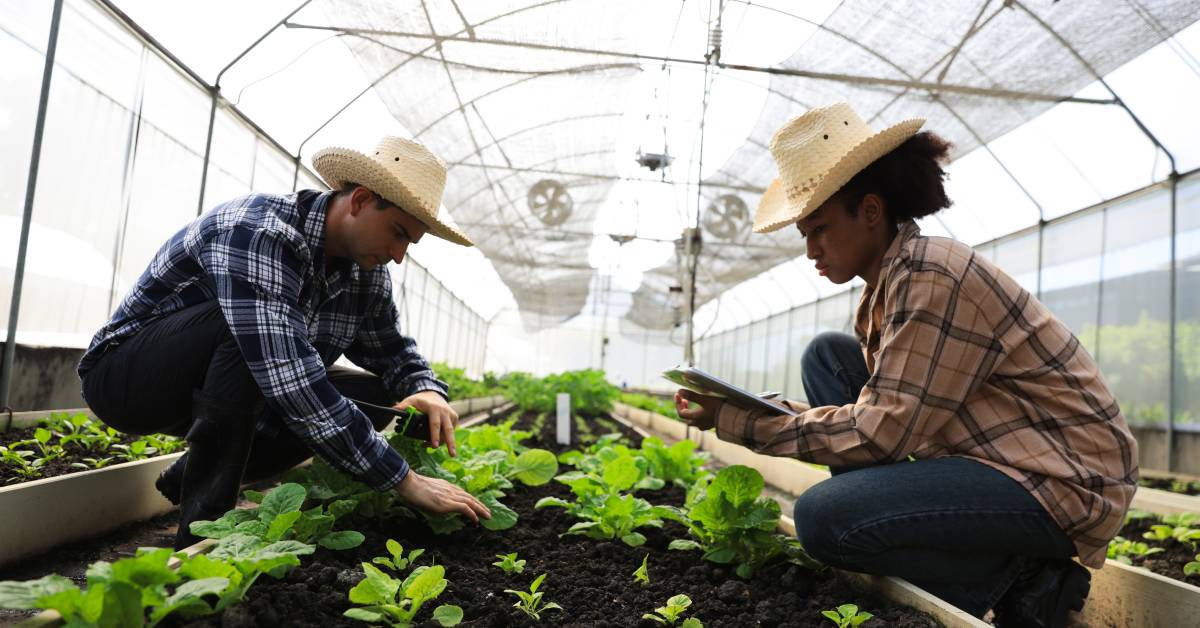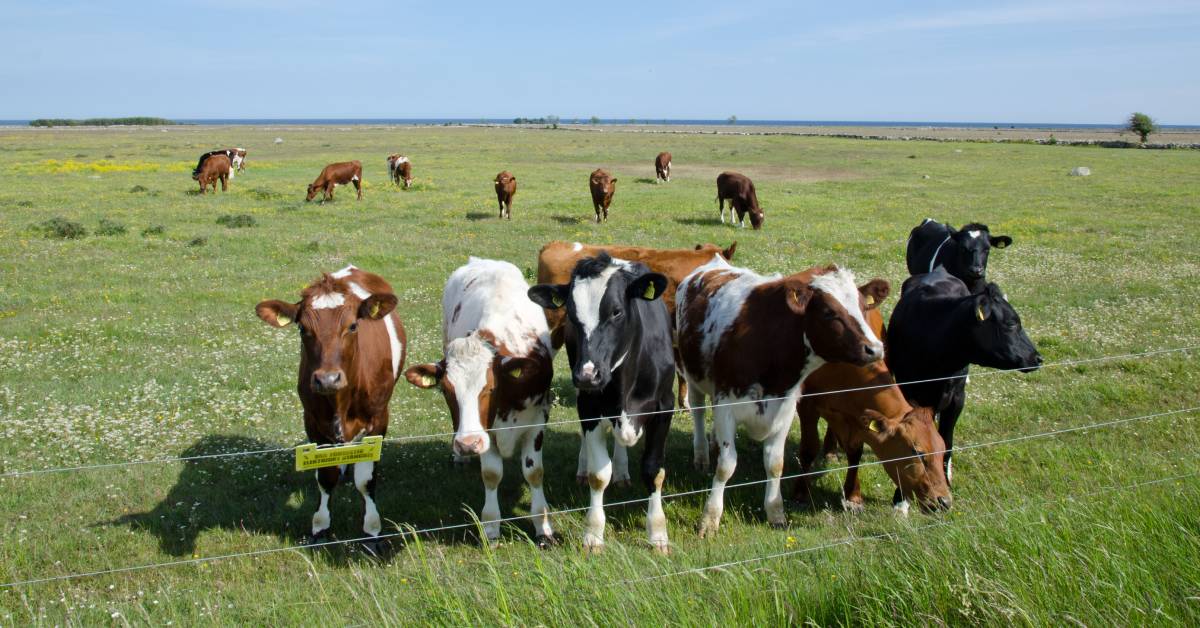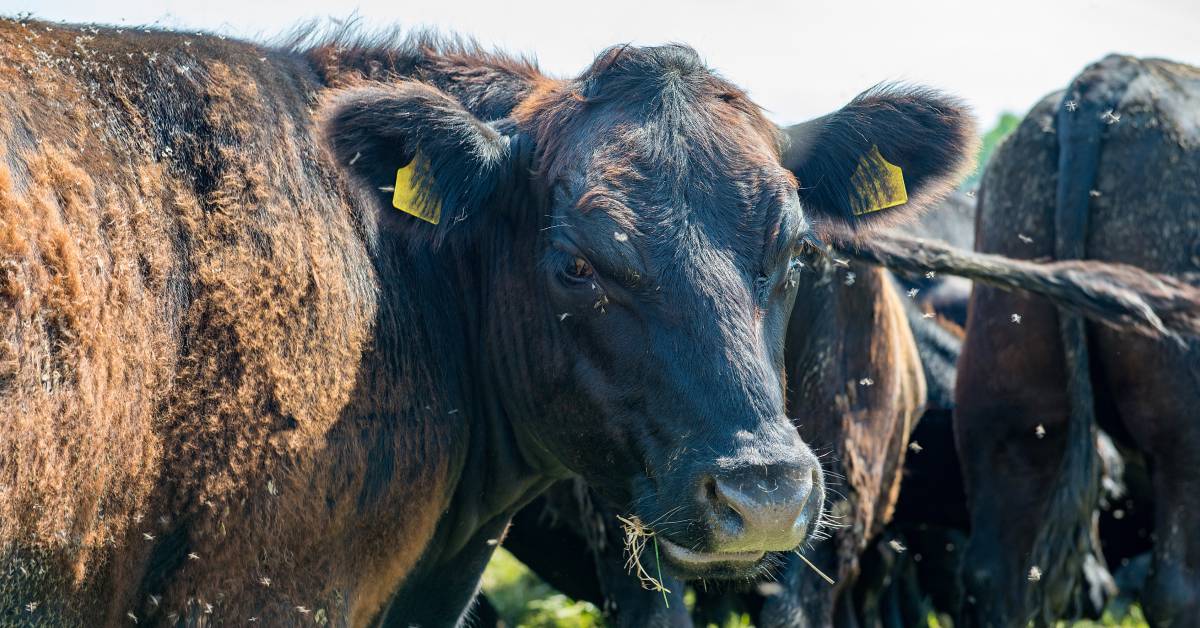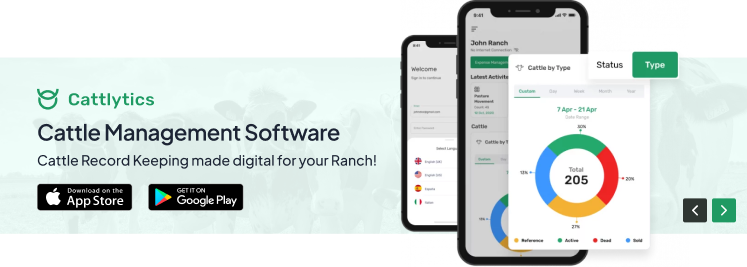Biological contamination is an important and alarming concern in the food industry. It poses severe health risks and threatens food safety. It occurs when harmful microorganisms like bacteria, viruses, fungi, or parasites contaminate food, leading to potential foodborne illnesses.
Understanding the sources and impacts of biological contamination is essential for businesses to maintain food safety, protect public health, and comply with regulatory standards. In this guide, we’ll explore all you need to know about biological contamination and its consequences for the food industry.
What is Biological Contamination?
Biological contamination occurs when harmful microorganisms, such as bacteria, viruses, fungi, and parasites, find their way into food, water, or other substances we consume. These pathogens can cause many illnesses, from minor stomach bugs to life-threatening infections.
The consequences of consuming biologically contaminated food or water can be severe, often resulting in symptoms like nausea, vomiting, diarrhea, and fever. To prevent these risks, strict hygiene and sanitation practices are essential across all stages of food handling, from production to preparation.
Types of Biological Contamination
There are several biological contaminants, each with its sources and risks. Here’s a closer look at the most common ones:
1. Bacterial Contamination
Bacteria are one of the most well-known biological contaminants. Harmful bacteria such as Salmonella, Listeria, and Escherichia coli (E. coli) can contaminate food, water, and surfaces. These bacteria thrive in improperly stored or handled food, especially undercooked meat or contaminated surfaces. Common symptoms include:
- Fever
- Diarrhea
- Vomiting
Prevention Tip: Follow safe food handling practices like cooking meat to the right temperature and avoiding cross-contamination.
2. Fungal Contamination (Molds and Yeasts)
Fungal contaminants like Aspergillus, Penicillium, and Candida can grow in damp or moldy environments, contaminating food and surfaces. These fungi can lead to respiratory problems and foodborne illnesses.
Prevention Tip: Keep environments dry and store food properly at the right temperatures.
3. Viral Contamination
Viruses such as Norovirus, Rotavirus, and Hepatitis A can be transmitted through contaminated food, water, or surfaces. They spread rapidly, especially in crowded environments.
Prevention Tip: Wash hands frequently and disinfect surfaces to prevent viral infections.
4. Parasitic Contamination
Parasites like Giardia, Cryptosporidium, and Toxoplasma can be transmitted through contaminated food or water, often found in undercooked meat or soil. Symptoms include:
- Diarrhea
- Abdominal pain
- Weight loss
Prevention Tip: Practice good hygiene and cook meat to the proper temperature.
5. Toxins
Harmful bacteria or molds produce toxins and can cause foodborne illnesses. Unlike pathogens, it’s the toxin itself that causes the disease, not the pathogen. These toxins are often resistant to typical food safety measures.
Impacts of Biological Contamination on Food Businesses
Biological contamination poses a significant threat to food businesses, with far-reaching consequences beyond health risks. The impact on public health, business reputation, financial stability, and legal standing can profoundly affect both large corporations and small food processors. Some companies in the food industry deal with challenges like employee training and maintaining high sanitation standards to prevent biological contaminants. To strengthen safety skills and theoretical knowledge, employees can enroll in programs such as an online Biology degree from GMC’s Global Online Leadership College, which blends life sciences education with practical leadership training, making it a strategic draw for businesses aiming to enhance their workforce’s capabilities.
Below, we delve deeper into the critical implications of biological contamination on food businesses:
1. Health Risks
Biological contamination’s most immediate and concerning impact is the risk to human health. Contaminants such as bacteria, viruses, fungi, and parasites in food can lead to foodborne illnesses, often resulting in symptoms like nausea, vomiting, diarrhea, abdominal pain, and fever.
In severe cases, these illnesses can be life-threatening. Some of the most common pathogens responsible for biological contamination include:
- Salmonella: Often found in raw poultry, eggs, and meat, Salmonella can cause symptoms ranging from mild to severe. In some cases, it can lead to hospitalization or death, particularly in vulnerable populations like the elderly, children, and immunocompromised individuals.
- E. coli: Escherichia coli, particularly the strain O157, is known for causing severe gastrointestinal distress, kidney failure, and even death in extreme cases. It is typically found in undercooked ground beef, unpasteurized dairy products, and contaminated produce.
- Listeria: This pathogen can thrive at refrigerator temperatures, making it a significant concern in ready-to-eat foods like deli meats, soft cheeses, and pre-packaged salads. Listeria infection can cause severe complications, including miscarriages, especially in pregnant women, and can lead to fatal infections in newborns and the elderly.
2. Damage to Business Reputation
Beyond the direct health risks, biological contamination can cause long-lasting damage to a food business’s reputation. Consumer trust is vital in the food industry, and once it is compromised, regaining it can be an uphill battle.
A company associated with food contamination risks being boycotted by customers, receiving negative publicity, and being blocked in the marketplace. A damaged reputation can lead to:
- Decreased Consumer Confidence: Once consumers fear that a company’s products are unsafe, they may turn to competitors, significantly reducing their market share.
- Loss of Business: Negative publicity and consumer distrust can result in lost sales, partnerships, and the inability to attract new customers.
- Branding Challenges: Rebuilding a tarnished brand requires significant time, effort, and financial investment. Companies must invest heavily in marketing campaigns, product recalls, and new safety protocols to regain consumer confidence.
3. Legal Consequences
Food businesses are legally obligated to maintain strict food safety standards. When these standards are violated, companies face various legal consequences that can jeopardize their future. In cases of biological contamination, businesses can be subjected to:
- Lawsuits: Consumers who suffer from foodborne illnesses linked to contaminated products may file lawsuits against the company. Legal fees, settlements, and potential compensation payments can be financially crippling for businesses, tiny and medium-sized enterprises.
- Fines and Penalties: Regulatory bodies, such as the Food and Drug Administration (FDA) in the United States or the European Food Safety Authority (EFSA), impose strict regulations on food safety. Companies violating these regulations can face hefty fines, penalties, and even sanctions, which can weaken them financially.
- Shutdowns or Recalls: In extreme cases, when contamination is severe or widespread, authorities may order product recalls or force businesses to shut down temporarily until corrective actions are taken. The cost of recalling contaminated products, destroying inventory, and halting production can be astronomical, and the process can take months to resolve.
- Litigation Costs and Loss of Licenses: Beyond fines, businesses involved in legal disputes over biological contamination may face prolonged litigation, resulting in further financial and reputational damage. In some cases, the company’s ability to operate could be restricted, leading to permanent license suspensions or a revocation of certifications.
What Are the Four Major Sources of Biological Contamination?
Biological contamination can originate from various sources, the four most common being human, animal, water, and air. Each source carries its unique risks to food safety and public health.
1. Human Source
Humans are a significant source of biological contamination, as they can unknowingly carry harmful microorganisms. Contamination can spread through direct contact, improper hygiene, or respiratory secretions.
Human contact with animal waste or improperly handled food can contaminate food processing or agricultural settings. Strict hygiene practices, such as regular hand washing and wearing protective gear, are essential to minimize the risk.
2. Animal Source
Animals can harbor harmful bacteria, viruses, and parasites in their digestive or respiratory systems, contaminating food products. Contamination often occurs through contact with infected animals or consuming contaminated animal products, such as meat, dairy, or eggs.
Proper handling, storage, and cooking of animal products, along with preventive measures like vaccination and veterinary care, are vital to controlling contamination from animal sources.
3. Water Source
Contaminated water is a major source of biological pathogens, including bacteria, viruses, and parasites. Water can become contaminated through industrial wastewater, sewage spills, or agricultural runoff containing pesticides, fertilizers, or animal waste.
Ensuring clean, treated water for irrigation, food processing, and drinking prevents waterborne diseases. Regular water testing and treatment protocols are critical in managing water-related contamination risks.
4. Air Source
Airborne pathogens, including bacteria, viruses, and mold spores, can lead to contamination. Diseases such as tuberculosis and the flu can spread through airborne droplets.
Mold spores can also affect workers’ health and the quality of food products, especially in poorly ventilated environments. Proper air filtration systems, routine cleaning, and adequate ventilation are essential to preventing air-based contamination.
How to Identify Biological Contamination? – Identifying Biological Contamination in Food Processing
Detecting biological contamination in food is crucial to ensuring product safety and quality. There are several key indicators to watch for:
Key Indicators
- Visible Spoilage Signs: Mold, discoloration, or slimy textures are clear visual contamination cues.
- Changes in Smell: A sour or rancid odor can signify microbial growth, particularly from bacteria or fungi.
- Unusual Textures: Softening, wilting, or a slimy surface texture on food often points to biological contamination.
Testing and Monitoring
Routine inspections and testing are essential for identifying and preventing biological contamination. Microbial testing, such as swabbing surfaces or food samples, helps detect harmful pathogens before they become a health threat.
Additionally, employing detection methods like PCR (Polymerase Chain Reaction) tests or culture-based techniques ensures contamination is caught early, minimizing consumer risks and avoiding costly product recalls. Regular monitoring is vital to maintaining consistent food safety standards and preventing contamination outbreaks.
How to Prevent Biological Contamination?
Prevention is key to avoiding biological contamination and its health risks. Here are some essential practices:
- Proper Handwashing: Wash hands frequently, especially after handling food, using the bathroom, or touching potentially contaminated surfaces.
- Sanitize Surfaces: Regularly sanitize surfaces in food preparation and storage areas to reduce the risk of contamination.
- Safe Food Handling: Use gloves and hairnets to minimize contamination risks and store food at proper temperatures.
- Proper Waste Disposal: Separate and dispose of hazardous waste properly to prevent contamination in food preparation areas.
- Water Treatment: Ensure water is disinfected to remove harmful pathogens before use.
- Personal Protective Equipment (PPE): When handling hazardous materials, Wear gloves, masks, and protective clothing to create a barrier against contamination.
- Routine Inspections: Regular inspections help identify potential contamination risks early and prevent outbreaks.
Role of Technology in Biological Contamination Prevention
Technology is crucial in preventing biological contamination in today’s fast-paced food industry. Food businesses can ensure higher safety standards and more effective contamination management through automation, data tracking, and analytics.
Automation in Food Safety Monitoring
Automation is revolutionizing food safety by enabling continuous, real-time monitoring. Automated food management systems track critical factors like temperature, humidity, and cleanliness, alerting businesses immediately if any parameters deviate from the safe zone. This proactive approach allows for faster response times, minimizing the risk of contamination before it escalates into a health hazard.
Data Tracking and Analytics
Data tracking and analytics provide actionable insights into potential contamination risks, helping businesses make informed decisions. By analyzing trends in contamination data, companies can identify weak points in their operations and implement targeted interventions. Data-driven decision-making enhances overall food safety protocols and improves operational efficiency.
How Can Food Safety Software Help with Biological Contamination?
Folio3 FoodTech food safety software is essential for businesses looking to manage biological contamination. With food safety software, companies can streamline their documentation processes, ensure compliance with food safety regulations, and maintain rigorous sanitation standards.
Its advanced features include automated record-keeping, real-time data monitoring, and alerts for potential contamination risks. By providing businesses with a robust framework for tracking and managing food safety processes, food safety software helps mitigate the risk of contamination, safeguard public health, and enhance overall operational efficiency.
Why Choose Folio3 FoodTech Food Safety Software?
Folio3 FoodTech’s Food Safety Software offers a comprehensive solution to tackle the complex challenges of biological contamination in food processing and agriculture. Here’s why it’s the ideal choice:
- Real-Time Monitoring and Alerts: The software allows for real-time tracking of contamination risks through automated alerts, ensuring that potential hazards are identified and addressed immediately. This proactive approach minimizes contamination chances and helps maintain high safety standards.
- Data-Driven Insights: The food safety management system includes advanced data tracking and analytics, enabling businesses to monitor trends, identify contamination patterns, and make informed decisions to improve safety practices. This feature also supports ongoing compliance with regulatory standards.
- Streamlined Documentation and Compliance: Folio3 FoodTech food safety software’s document management module ensures that all records are easily accessible and fully compliant with food safety regulations. Automated record-keeping reduces human error and simplifies audits, which is essential for maintaining certification and meeting industry standards.
- Customizable for Business Needs: The platform is customizable, so it can be tailored to meet the unique needs of any food-related business, whether a large-scale processing plant or a small farm operation.
Wrap Up
Safeguarding against biological contamination is critical for food industry businesses aiming to protect public health and maintain regulatory compliance. By implementing rigorous food safety measures and leveraging advanced technology, businesses can proactively prevent contamination, reduce health risks, and maintain consumer trust.
Folio3 FoodTech’s food safety software offers a robust solution with real-time monitoring, automated documentation, and advanced data tracking to streamline food safety practices. With food safety software, you gain powerful tools for contamination prevention, enabling your business to maintain the highest safety standards and achieve consistent compliance with ease.
FAQs
What Are The 5 Sources of Food Contamination?
The five main sources of food contamination are biological, chemical, physical, environmental, and cross-contamination. These sources pose risks to food safety and can lead to foodborne illnesses.
What Are The 4 Types of Biological Hazards That Can Contaminate Food?
The four types of biological hazards are bacteria, viruses, fungi, and parasites. Each can contaminate food and cause illness if consumed.
What Are The 4 Sources of Biological Contamination For Food Handlers?
The primary sources are humans (via improper hygiene), animals (contaminated animal products), water (unfiltered or untreated water), and air (airborne pathogens in the processing area).
What Are The 4 Major Contamination Hazards?
The four major contamination hazards in food safety are biological, chemical, physical, and allergenic contamination. Proper handling, storage, and hygiene practices help reduce these risks.
What Is An Example of Biological Contamination?
An example of biological contamination is Salmonella bacteria in undercooked poultry. Consuming contaminated poultry can cause foodborne illness, leading to symptoms such as diarrhea and fever.
How Does Biological Contamination Affect Food?
Biological contamination introduces harmful microorganisms into food, posing health risks like foodborne illnesses. Pathogens like bacteria, viruses, and parasites can thrive in improperly handled or stored food.
What Are 4 Sources of Biological Contamination In Food Safety?
The four sources include human handling, animal contact, contaminated water, and airborne pathogens. Preventing these sources is essential for maintaining food safety.
What Are Essential Things To Know About Biological Contamination and Its Sources?
Understanding biological contamination sources, such as human contact, animals, water, and air, is crucial for preventing foodborne illnesses. Hygiene, sanitation, and proper handling practices help minimize risks.
How Can I Prevent Biological Contamination?
You can prevent biological contamination by washing hands frequently, sanitizing surfaces, storing food at safe temperatures, and using clean, treated water in food processing.

